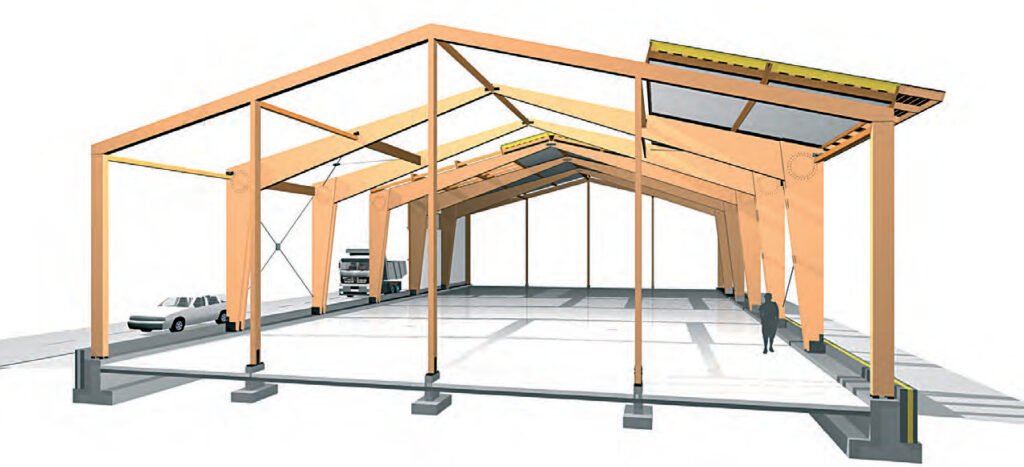Uniform recommendations for Finnish large wooden buildings
A major gap has been filled in general design principles for large wooden buildings with the publica-tion of HalliPES, the uniform industrial standard for wide-span, industrial wooden buildings. The new guidelines include recommendations for load-bearing construction and joints in wide-span timber buildings and for the design of elements in the external envelope.
Solutions are set out both for buildings with load-bearing walls and for buildings with separate frames. They can be applied to industrial and storage buildings, sports halls, places of assembly and commercial buildings, free-stall cattle sheds and riding schools.
Maximum spans are 20 metres for buildings with load-bearing walls and 32 metres for buildings with separate frames. Larger construc-tions can be built, but HalliPES does not provide solutions for these.
The aim of HalliPES is to make the designer’s work easier by providing a range of well-tried solutions on which specific design solutions can be based. Type of frame support, spans and degree of com-pletion of envelope elements, plus structural details may be varied freely.
The 19-part HalliPES guidelines can be downloaded at puuinfo.fi/hallipes. The structural solutions described are basic principles and the application of them to specific projects is the responsibility of the project designers. Dimensioning of load-bearing structures and joints, plus technical solutions relating to fire protection, sound insulation and waterproofing must always take into account the demands of each specific case. Structures must be dimensioned according to the relevant Euro-codes.
The HalliPES project is financed by Finnish Wood Research and its member companies, plus Tekes and the Finnish Forest Foundation.

HalliPES standardises design and calculation principles for wide-span structures. Image: Finnish Wood Research
HalliPES
- makes it easier to acquire wooden buildings
- makes it easier to design wooden buildings, commission the design of wooden buildings, and obtain the necessary approvals for them
- offers various manufacturers’ solutions simultaneously and makes it easier to obtain competitive tenders
- improves the quality and control of wooden building
- creates uniform rules for the supply of wooden elements and contract conditions for them
- allows for rapid construction times
- creates uniform criteria for the quality of design and construction
With the standardisation of element joints it is possible to
- speed up the on-site phase using the ‘ever-ready’ principle
- have a simple jointing method and standardised joints
- have a simple method of sealing joints between elements
- have a high degree of pre-fabrication
- ensure the strength of joints and transfer of forces at joints directly
- ensure the safety and water-tightness of waterproofing
- develop uniform manufacturers’ conditions while providing company-specific solutions